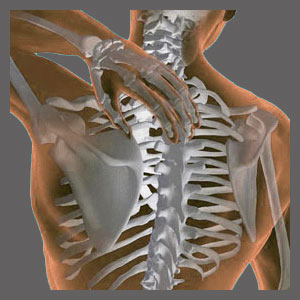
Is spinal stenosis normal? Yes, in fact it is. If that is all you wanted to know, then feel free to be on your way… However, if you want the full story about spinal stenosis, then stick around and learn from the experts!
At what age is spinal stenosis considered to be normal? Is early-onset stenosis considered rare? What causes spinal stenosis anyway? Is the spine fundamentally flawed in its natural design to allow stenosis to happen in the first place?
You have questions and we provide the answers. Let’s learn more about spinal stenosis together and focus on just how normal or abnormal it is given a variety of variables.
Is Spinal Stenosis Normal and What is it Exactly?
Spinal stenosis describes a reduction in the size of the central vertebral canal. This is the hollow that is found inside the vertebral bones that comprise the spine. Inside this canal space that runs the full length of the spine are found the spinal cord, the spinal nerve roots and other important tissues. When the central spinal canal becomes reduced in size, potentially threatening to compress nerve tissues, this is known as spinal stenosis.
A related diagnosis is foraminal stenosis. This describes when one of the small openings that lead from the central spinal canal out into the body is reduced in size and possibly threatens to compress the single nerve that exits through this space. Foraminal stenosis is considered a far less serious diagnosis, since it can only affect 1 nerve at a time, rather than the entire spinal cord or cauda equina structure in the central canal.
If you have a difficult time imagining spinal stenosis, then just picture a hollow tube filled with water. If you pinch the tube, it will compress the water and cause the structure of the tube and water to change. This is essentially very similar to the spinal canal narrowing in response to spinal stenosis. The shape and function of the nerves inside the canal may be affected by the pressure of compression…
To imagine foraminal stenosis, just picture trying to crawl through a hole that is too small for you to fit. The reduction is size of this space will apply pressure to your body if you decide to squeeze through. This might be painful or impossible for you to fit at all through the hole. This is essentially the same as a nerve trying to exit from the spine through an opening which is reduced in size. The nerve might not fit at all and may be compressed by the small opening, potentially changing its ability to function properly.
When is Stenosis Normal and When is It Unusual?
Spinal stenosis is a normal and expected part of age and activity. As we get older, degenerative changes in our spines cause stenosis to occur. There are several universal or near universal contributors to spinal stenosis, including disc desiccation, bulging and herniated discs, osteoarthritis and spinal joint changes. Case-specific contributors to spinal stenosis are far more variable and include scoliosis, lordosis, kyphosis, spondylolisthesis, low bone density, ligamentous issues and other concerns.
We will basically all suffer reduced patency in the spinal and foraminal canals as we get older. However, many people will demonstrate these same changes earlier in life due to anatomy, lifestyle or trauma.
Furthermore, the degree of stenosis each person demonstrates is highly variable and this can affect the symptomatic profile dramatically. For example, an individual may demonstrate moderate stenosis throughout several areas of the spine. They are likely to have no symptoms and probably will not develop any in the future. Another individual might have virtually no stenosis in much of the spine, but demonstrates a single level of focal stenosis at L5 due to an injury. This person might have pain due to the existing injury and not the stenosis. This person might have pain due to the stenosis. This person might have no pain at all. The takeaway here is the stenosis is highly variable in its symptomatic profile. Let’s investigate this fact in greater detail…
Is Spinal Stenosis Normally Painful or Not?
When discussing spinal stenosis, it is common for people to assume that it is painful. This is why this section might be the most vital of the entire conversation!
Important Facts:
Spinal stenosis is not inherently symptomatic.
Most people demonstrate stenosis, but few suffer direct symptoms from their stenosis.
The degree of stenosis is not always related to its symptomatic potential. Each case is highly individualized. Many factors can influence stenosis symptoms.
When stenosis is symptomatic, expressions can be severe. In extreme cases, dire consequences can result, such as incontinence, sexual dysfunction, paralysis and death.
Just because stenosis exists in the presence of pain or neurological expressions does not inherently mean that the stenosis is responsible. Doctors should always carefully and objectively evaluate each profile in order to minimize the chances for misdiagnosis and failed therapy.
This web resource is full of discussions related to spinal stenosis. In fact, stenosis is the only topic we cover here! If you want to learn more, just start reading. There are hundreds of essays here that will give you a complete picture of every aspect of spinal stenosis. If you are a patient trying to make informed choices for your care, or a doctor trying to provide improved outcomes for your patients, the discussions here will serve you well. Best of all, you can trust them for their honesty and objectively, since they are written by a world class editorial board of experts who work with stenosis patients every day.
Spinal Stenosis > Spinal Stenosis Facts > Is Spinal Stenosis Normal?





